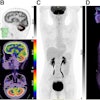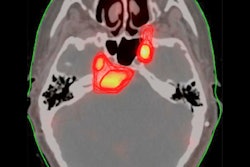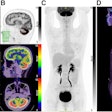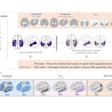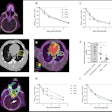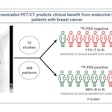Dear Molecular Imaging Insider,
Clinical methods for imaging changes in Alzheimer's disease brain pathology over time remain elusive, notwithstanding hurdles like a recent decision by the U.S. Centers for Medicare and Medicaid Services that limits reimbursement for administration of the drug Aduhelm to a single amyloid PET scan per lifetime.
One challenge is that amyloid deposits and tau neurofibrillary tangles begin to form well before symptoms appear and patients become candidates for any potential treatment. Because of this, significant efforts are being made to develop tools for identifying changes before they can be reliably captured by cognitive decline.
To that end, Canadian researchers recently led an international group proposing a new PET-based framework for tracking longitudinal tau neuropathologic changes, from early to late stages of Alzheimer's disease. The model integrates tau PET data with a gold-standard clinical histopathological staging system -- namely, Braak staging. Read about it here in this edition's Insider Exclusive.
That research into tau PET may be hitting its stride is reflected in two other recent stories we've covered, which are listed below:
- A group led by Stanford University analyzed tau PET scans and found divergent patterns of cortical tau uptake in 9% of individuals with early Alzheimer's disease.
- Mayo Clinic researchers in Rochester, MN, developed a method called the "overlap index" for tau PET imaging, in which identical voxels showing tau protein deposits can be measured in serial scans over time.
On March 23, the U.S. Food and Drug Administration (FDA) approved Lu-177 PSMA-617 for patients with metastatic prostate cancer. The green light included Novartis' kit (Locametz) for preparing injections of gallium-68 (Ga-68) PSMA radiotracer.
Some calls seem simple for the FDA, as Ga-68 PSMA is highly effective for identifying metastatic prostate cancer tumors. Australian researchers, however, suggest the tracer's capabilities stretch further to helping predict how long patients may survive disease-free after radical prostatectomy.
In other PET radiotracer research, ligands labeled with Ga-68, sodium fluoride (NaF), and zirconium-89 (Zr-89) have also revealed significant findings, as we covered in the following stories:
- German researchers found a Zr-89 PSMA-DFO tracer might be used in men with prostate cancer biochemical recurrence after PET/CT scans with established tracers are negative.
- An experimental copper-64 (Cu-64) DOTA-AE105 tracer reveals the activity of macrophages involved in atherogenesis, according to a Danish group.
- Researchers in Scotland suggest an F-18 NaF-labeled PET tracer holds promise as a marker of disease activity in acute aortic syndrome and may predict patient outcomes.
- A team at the University of California, San Francisco suggests that an immuno-PET tracer named Zr-89 VRC01 may have a role to play in HIV persistence studies and viral eradication efforts.
Finally, incidental detection of COVID-19 infection continues in cancer patients. Recently, Iranian nuclear medicine physicians diagnosed COVID-19 in an asymptomatic patient undergoing technetium-99m SPECT/CT imaging.
That's all for now. Be sure to check back regularly for more news in your Molecular Imaging Community!




